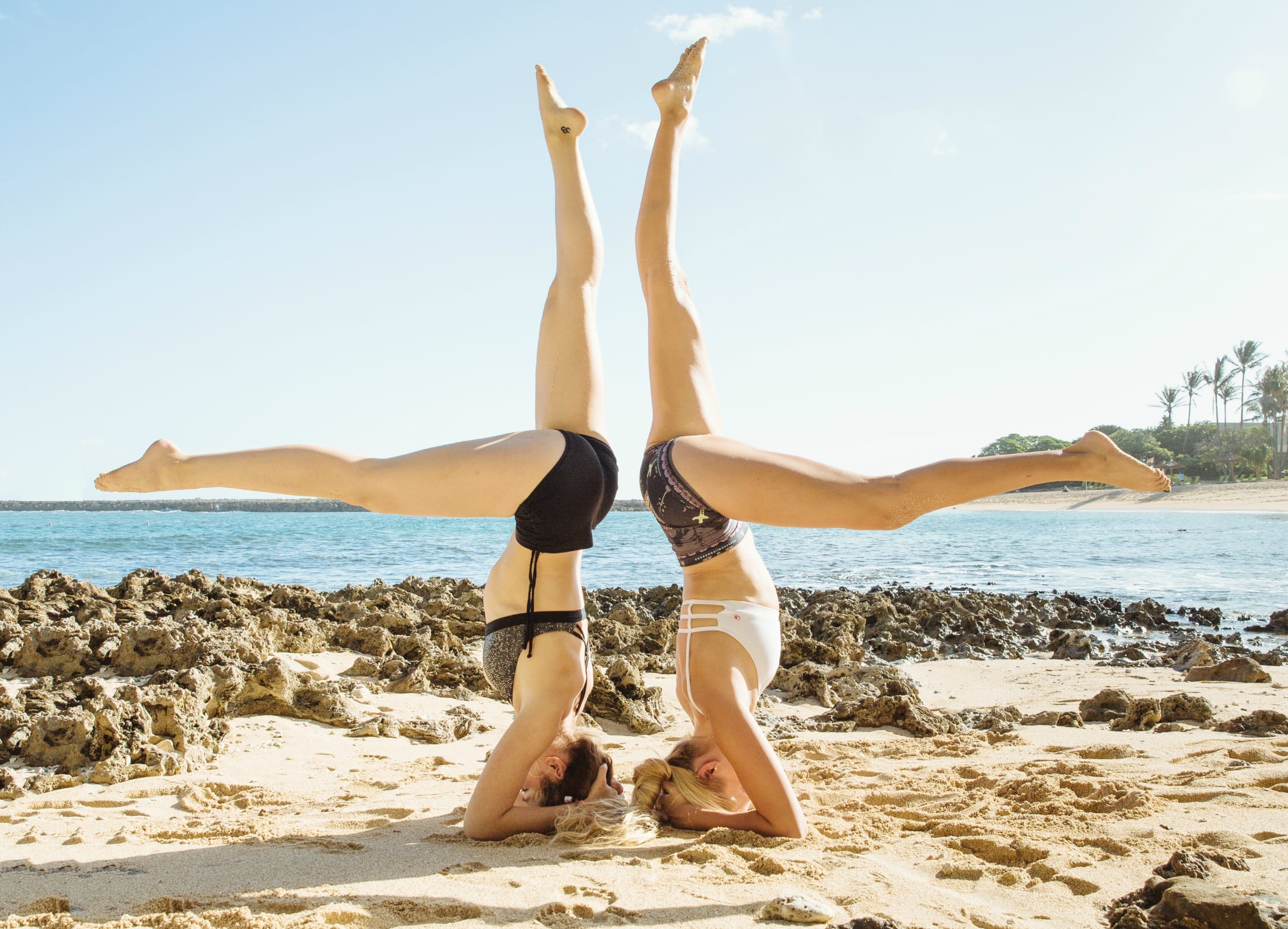
Sanskrit Name: Salamba Sirsasana (sah-LOM-bah shear-SHAHS-anna)
sa = with
lamba = support
sirsa = head
Get Started:
- Begin in Dolphin Pose with forearms securely rooted to the mat.
- Clasp hands together, aligning the pinky fingers so that they’re both solidly on the ground. Create a nest for your head to rock into.
- Place crown of head into the nest of your hands, while keeping forearms on the mat. Note: Weight should be distributed onto the forearms more than the top of the head!
- Begin walking toes closer to hands, shifting hips directly over thighs. You will be on your tip-toes.
- Bend one knee, bringing toes toward the seat. If this works, you can begin to lift the other leg, into a little egg.
- If this feels secure, begin to lift legs to ceiling.
Practice with Chelsey Korus IRL at Wanderlust O’ahu! Tickets on-sale now. Just can’t wait? Get those O’ahu vibes all year long with her class pack, “Wild in O’ahu,” available to stream now on Wanderlust TV.
Benefits: Known as the “king of asana,” this pose strengthens the shoulders, arms, and wrists. Because it’s an inversion, it can help to flush out the adrenal glands and decrease fluid buildup in the lower extremities. It is also said to increase focus and relieve stress.
Contradictions: This pose should be avoided if you have any injury to the head, neck, or back. If you have low blood pressure, be cautious not to start class with this pose. Some teachers recommend not doing inversions while menstruating, but the science is out—listen to your body and use caution.
Know Your Asana: This pose is extremely difficult for most people to master. If you do, try playing around with open legs. Master yogis may opt to take a completely unsupported version of the pose, without using the arms and placing the head directly on the ground.